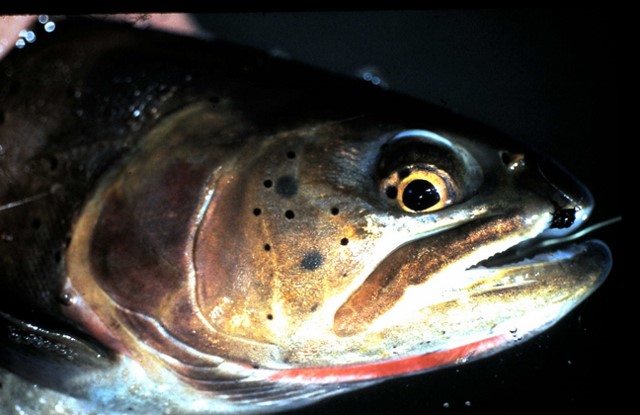Henry’s Fork, August 17th, 2021
Not much change from our August 14th posted fishing report. Look for AM Trico activity to increase and the same for trout interest in honey ants and other terrestrial insects. Excerpts from Rob Van Kirk’s Henry’s Fork drainage status posted today follow.
Headlines:
- Yesterday was hot, dry, and smoky again, but relief from each of these things will arrive tonight and persist through the weekend.
- Rain over the next five days could be heavy along the northern and eastern edges of the watershed.
- Diversion increased yesterday while natural flow continued its slow recession; streamflow in the lower Henry’s Fork is at the target flow this morning.
- At an average outflow of 724 cfs, Island Park Reservoir dropped by around 600 ac-ft yesterday and is 43% full, compared with 57% full on average and 23% full in 2016.
Details:
Mean temperature yesterday was 7 degrees F above average despite continued heavy smoke cover. The water-year precipitation total to date stayed at 78% of average. Much cooler, wetter weather is forecast to arrive tonight and persist at least through the weekend. Expected precipitation amounts continue to increase with each forecast cycle. The current 5-day forecast calls for around 0.25 inch at lower elevations on the Snake River Plain to 0.5-0.75 inch in Island Park to 2 inches at the highest elevations in the Teton Range. These amounts are slightly lower than what we received 2-3 weeks ago but will be concentrated into a shorter time period. Although precipitation is expected to end on Sunday, temperatures are forecast to remain near average, if not below, through next week.
Natural streamflow continues to recede slowly and was 68% of average yesterday for the watershed and within two percentage points of that in each of the three subwatersheds. Diversion increased a little yesterday, and streamflow in the lower Henry’s Fork is at its target this morning after staying just a little above it for several days. Delivery to the Teton River through the Crosscut Canal has been stable at 210 cfs since Sunday afternoon. Upcoming precipitation is expected to be heavy enough to increase natural flow by around 100 cfs again, and I expect diversion to decrease a little as well, depending on precipitation amounts in the valleys.
At an outflow of 724 cfs, Island Park Reservoir dropped by 596 ac-ft yesterday. The reservoir is 43% full, compared with 57% on average and 23% in 2016. Together, the three reservoirs in the Henry’s Fork watershed are 62% full, compared with 70% on average and 52% in 2016. Reservoir draft rate will slow tomorrow through the end of the week due both to direct precipitation on the reservoir surface and to increased stream inflow. After some higher values last Thursday and Friday, peak water temperatures have decreased watershed-wide by 3-4 degrees since then, due primarily to increased wildfire smoke. Turbidity continues to increase at Island Park Dam due both to increased algae growth in the reservoir and continued reservoir draft. Data from past years shows that sediment transport out of the reservoir accelerates when the reservoir drops below about 60,000 ac-ft, which happened on Saturday. The upcoming rain will slow algae growth but is also likely to generate more suspended sediment from shoreline erosion. In general, I expect that turbidity in reservoir.
Rob Van Kirk, Ph.D.
Senior Scientist
P.O. Box 550
Ashton, ID 83420
208-652-3567 OFFICE
208-881-3407 CELL
208-652-3568 FAX



